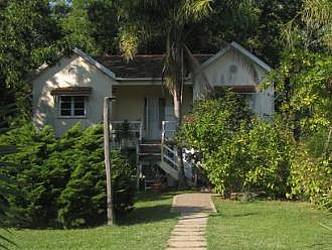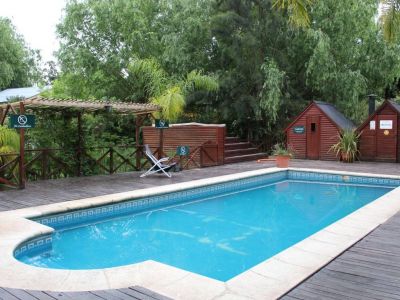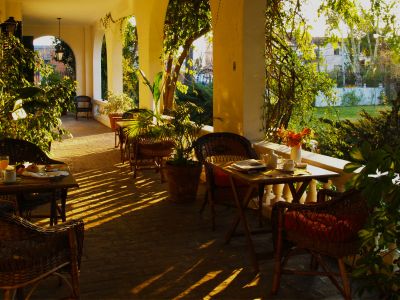One Saturday morning, we left very early towards the city of Tigre. At the Buenos Aires neighborhood called Olivos, we got on the little train of Tren de la Costa at the Maipú Station.
Funny wagons with large panoramic windows go along the rails bordering the waterfront of the Río de la Plata. During the journey, we passed by the very “fashionable” neighborhoods of La Lucila, Martínez, Acassuso, San Isidro, Becar and San Fernando. Thus, the tour started as soon as we got on the train, discovering, as we rode, the various nooks, nautical clubs, spots, pubs, restaurants, running, cycling and skating tracts.
When we got to Tigre, we walked for a few blocks. There we found the three docks of the fruit harbor.
In the first dock we visited, a great variety of barges full of poplar logs notably caught our attention. Their decks were covered with water because of the overweight. The float lines were on the borders, generating the feeling that they were going to sink at any moment. A couple of the harbor workers explained to us that the final destination of those logs was the production of craters to carry fruit from the delta.
With a little bit of luck, visitors can come across some craftsmen carving pieces of wood.
Shopping at Tigre`s Fruit Harbour
Alter taking several photos, we got on to the second dock. Long concrete stairs descended along the channel, allowing to appreciate countless roofed launches, with open sides so as to commercialize their colorful fruit and attractive plants, both coming from the Argentinian littoral.
Apart from the ambulant sales in the harbor, these launches provide food to the inhabitants of the islands, circulating daily along the delta channels.
We had a rest in order to breathe some fresh air. We sat to appreciate the surroundings and we noticed that several children were trying to fish in the company of their grandfather. With a rudimentary rod and a little float, they were patiently waiting for some fish to swallow the bait.
To our backs, up the stairs, we discovered the classical warehouses where wicker, wooden and cane items were traded. Various types and sizes of baskets, chairs, shelves, kitchen utensils and bird cages, among other things, decorated the place.
From this last dock, bus launches and catamarans leave daily and sail along the channels of this exuberant delta.
On the other hand, when we got a little bit hungry, we looked for a place to have lunch. Several restaurants and coffee-shops offer large terraces with a view of the Luján River.
The gastronomic fan is wide: from non-expensive menus to delicious steaks grilled on a spit that tempt every visitor.
One recommendation: if you decide to visit the fruit harbor, it is ideal to do it early, as more and more people, as well as cars looking for a place to park, start to appear during the day.
As a more economic option, you can carry your own lunch and have a picnic by the Luján River, letting your feet hang over the water.
Pablo Etchevers
Gentileza Puertodefrutos.gob.ar





















